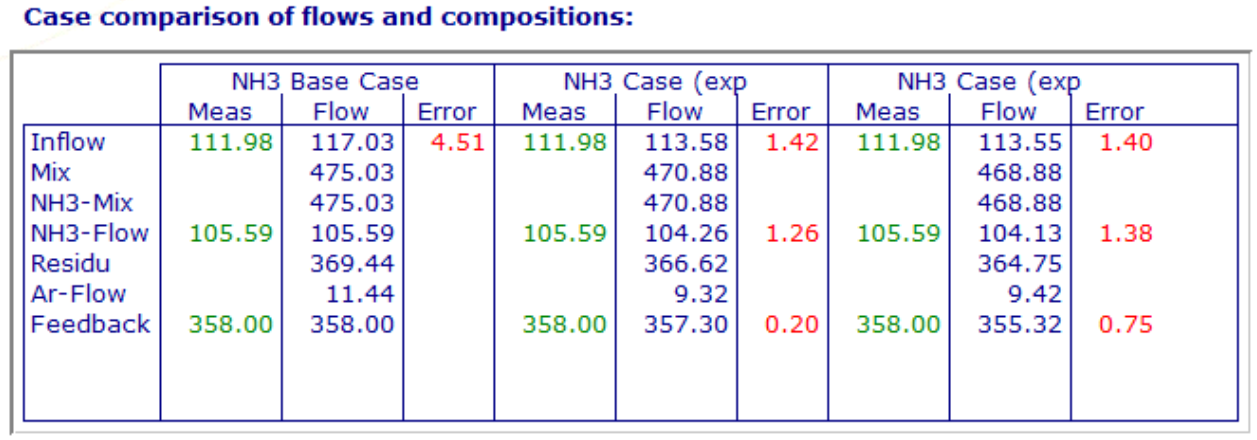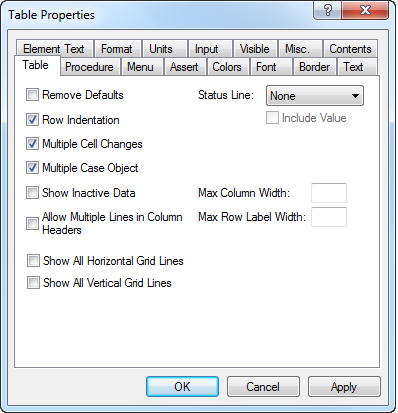Managing multiple case selections
Viewing multiple case files
AIMMS allows you to simultaneously view the results of several case files within the graphical user interface. In addition, it is possible to reference data from multiple case files from within the modeling language, enabling you to perform advanced forms of case comparison.
Multiple case selections
AIMMS offers a tool to construct a selection of cases to which you want simultaneous access, either from within the graphical user interface or from within the model itself. You can add one or more selected cases from within the Data menu to the multiple case file selection through the Data-Multiple Cases menu. This will open the Select Multiple Case Files dialog box illustrated in The Select Multiple Case Files dialog box.

Fig. 60 The Select Multiple Case Files dialog box
It shows the current contents of the multiple case file selection. You can modify the order of the displayed cases, and add cases to or delete cases from the collection.
Viewing Multiple Case Data
Viewing multiple case data
The prime use of multiple case selection takes advantage of AIMMS’ capability of displaying data from multiple cases within its graphical objects. Example of a multiple case object is an illustration of a table which displays the contents of a single identifier for all the cases in the case selection shown in The Select Multiple Case Files dialog box.

Fig. 61 Example of a multiple case object
Creating multiple case objects
A data object on a page in the graphical end-user interface can be turned into a multiple case object by checking the multiple case property in the object-specific options in the object Properties dialog box. Table-specific Properties dialog box. illustrates the object-specific Properties dialog box of a table object.

Fig. 62 Table-specific Properties dialog box
As a result of enabling multiple case display, the object will be extended with one additional virtual dimension, the case index, which will be displayed in a standard way.
Restrictions
AIMMS only supports the display of multiple case data in object types for which the added dimension can be made visible in a well-defined manner. The most important object types that support multiple case displays are tables, pivot tables, curves, bar charts and scalar objects. Because of the extra dimension, the bar chart object is only able to display multiple case data for scalar and 1-dimensional identifiers. During a single case display, a bar chart can also be used to view 2-dimensional identifiers.
Case Referencing from Within the Language
Using inactive case data
In addition to viewing data from multiple case files as graphical objects in the graphical user interface, AIMMS also allows you to reference the data of case files that are not currently active within the model. This allows you, for instance, to perform advanced forms of case file differencing by comparing the current values of particular identifiers in your model with the corresponding values stored in an inactive case.
The set AllCases
The collection of all case files referenced via the AIMMS data menu, or
via the intrinsic functions such as CaseFileLoad, and
CaseFileMerge is available in the AIMMS language through the
predefined integer subset AllCases. Each case file is represented by an integer
element in this set, and, as explained in Case Management Functions,
AIMMS offers several built-in functions to obtain additional information
about a case through its case number.
The set CurrentCaseSelection
AIMMS stores the case selection constructed in the Select Multiple
Case Files dialog box presented above in the predefined set CurrentCaseSelection, which is
a subset of the ever growing set AllCases. Through this set you get easy access
within your model to the cases selected by your end-users in the
Select Multiple Case Files window.
Referencing case data
You can reference the values of specific identifiers within a particular
case by simply prefixing the identifier name with an index or element
parameter in the set Allcase or any of its subsets. Thus, if cs is an index
in the set`CurrentCaseSelection`, the following simple assignment
will inspect every case in the user-selected multiple case selection,
and store the values of the variable Transport(i,j) stored in that
case in the parameter CaseTransport, which has one additional
dimension over the set of CurrentCaseSelection.
CaseTransport(cs,i,j) := cs.Transport(i,j);
Advanced case comparison
The capability of referencing inactive case data, enables you to perform advanced forms of case comparison, which would be hard to accomplish without the AIMMS facilities for case referencing. As an example, consider the following statement.
RelativeDiff(cs,i,j) := (cs.Transport(i,j) - Transport(i,j)) /$ Transport(i,j);
It computes the relative difference between the current values of the
variable Transport(i,j) and those values stored for each case
referenced.
Inactive data
Please note that cs.Transport(i,j) above, may contain inactive data,
when index cs refers to the active case. In order to remedy this,
you may want to use the CleanUp statement, see
Data Control, at the start of procedures containing case
referencing.